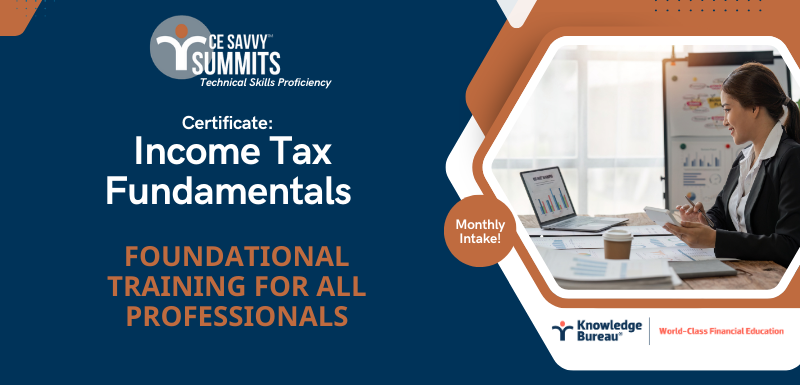Last updated: July 15 2025
AUTHREP Changed July 15

Since July 15, the "Authorize a Representative" service in EFILE, accessed through tax software, will no longer be available. Tax professionals must now use the Represent a Client (RAC) portal to request online access to a client’s account.
Existing approved authorizations for clients will continue to function.
The Backdrop: Until July 15, representatives linked to an EFILE number could submit an authorization request through CRA certified software. The taxpayer was required to sign the Authorize a Representative (AuthRep) form, granting a business, group, or individual access to their CRA account.
While every individual with a SIN or other assigned Tax Number has a CRA account, not all have activated access to it.
Once CRA accepted the AuthRep request, access to the taxpayer’s account was typically granted immediately. This allowed tax professionals to view key information such as income slips, carryforward amounts, account balances, and liens.
Access was provided at two levels:
- Level 1 – View-only access
- Level 2 – Full access, including the ability to make changes
In certain situations—such as in the case of a deceased taxpayer—access was not granted immediately. In these cases, CRA required verification of the executor’s information against legal documentation, such as a will, before access could be approved.
Why AUTHREP is Important. Access to a taxpayer’s CRA account is especially important in today’s digital age, where tax documents are often not mailed directly to individuals. Many taxpayers struggle to access and print these documents from electronic platforms to provide them to their tax professional.
When a tax professional has authorized access to a new client’s CRA account, they can review prior-year tax returns and information slips to ensure all income is accurately reported. This was particularly crucial during the last filing season, which saw significant delays both in financial institutions mailing slips to clients and in CRA uploading information.
Authorization is a vital step to ensure that tax returns are complete and accurate.
The Change: Since July 15, 2025, access to this tool has changed. It is no longer the easy, seamless process it once was. The CRA has updated the procedure so that a tax professional with RAC access through EFILE can now request access to a client’s information online. However, the client must log in to their My Account and confirm the request before the information becomes available to the tax professional.
Sounds simple—but unfortunately, it isn’t. Many people have locked themselves out of their My Account. Recovering access requires either a phone call to the CRA or going through an online recovery process. To recover a user ID, an individual must provide their SIN, date of birth, the amount from Line 15000 of their last tax return and answer additional security questions. To reset a password, the user ID is needed, along with answers to security questions.
If all of an individual’s tax information is stored solely in My Account and they have never printed a Notice of Assessment, they may not have access to Line 15000, making recovery more complicated.
Assuming the taxpayer can access their My Account, the tax professional submits an authorization request online. The taxpayer then has 10 business days to confirm or deny this request via their My Account. Once confirmed, the tax professional gains access.
For individuals who regularly use My Account—particularly on their phone—and feel comfortable navigating the platform, this process can be quick and straightforward. However, in many professionals experience, relatively few people both have access to their My Account and are confident using it on a mobile device.
What about the segment of our population that does not have access to My Account—and quite simply, may never have it? For example, you may have senior clients who, even though they might have a tablet and an email address to keep in touch with family on Facebook, are not interested in registering for My Account. Many are understandably wary of online scams targeting seniors and prefer to avoid any additional online accounts or digital processes.
Register for My Account: in order to register for My Account, the following information is required:
- A Social Insurance Number (or temporary or individual or non-resident number)
- Date of Birth
- Amounts reported on most recent tax return (the most recent one that was filed and assessed within the last 2 years)
The following are also required in order to gain access in a timely manner and verify their identity:
- Canadian Passport (As of the writing of this article, the CRA verification of identity service is not functioning for passports) OR
- Canadian driver’s license OR
- Provincial or Territorial photo ID card AND
- Mobile device with a working camera
As of now, no provisions have been announced for newcomers to Canada, first-time filers, or taxpayers who have not filed a tax return in the past two years.
If the taxpayer does not have the ability to setup a My Account, but does have a recent notice of assessment, which requires the filing of a T1 return, they can provide a signed Certification, at which point the tax professional can submit this through RAC. CRA indicates that they may still require a verification from the taxpayer on this request. There is no indication on how long this may take.
If the taxpayer does not have a recent tax return—which includes anyone filing for the first time—the options are limited. There are two Provincial partners, Alberta and British Columbia, that could be used as a registration option for My Account. These require an Alberta.ca account or BC Services card but the requirement to have filed taxes in the last 2 years is not mandatory.
The other option at the moment is for the taxpayer to have their taxes filed – the first time – without access to My Account in order to procure the necessary documentation to setup My Account and authorize access for the subsequent tax year. This can be fraught with risk for the taxpayer.
Finally, the taxpayer can contact the CRA directly. No instructions have been provided on how this process will work. CRA has indicated that calls may be routed to an automated service line. If the automated system does not resolve the issue, CRA’s suggested solution is simply to try calling back at another time! This is far from an ideal solution, especially given how difficult it can be to reach the CRA by phone. Wait times often exceed an hour—if you’re even able to get into the queue at all.
Can’t verify identity online? If a taxpayer is unable to verify their identity online, then they will need to request a CRA security code which will be mailed to them (with the address CRA has on file) – within 10 business days. That seems hopeful. However: there is a catch. This will only work if they are able to register for the My Account. And that takes us back to the first loop of doom, described above. In order to register for My Account, the following information is required:
- A Social Insurance Number
- Date of Birth
- Amounts reported on most recent tax return
Bottom Line. CRA has implemented a significant change that may make it easier in some cases for a tax professional to gain access to their client’s CRA account. However, in most cases, the process will be much more cumbersome and time-consuming. For newcomers to Canada and other first-time filers, it appears nearly impossible to provide access until a tax return is filed. CRA will need to provide clearer information on how the process can effectively serve all taxpayers.
